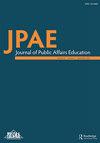Art for policy and policy for art
IF 2
Q1 EDUCATION & EDUCATIONAL RESEARCH
引用次数: 0
Abstract
The intersection of arts and public policy is three-dimensional. A multitude of direct subsidy, regulatory, and support programs are advocated and managed as “arts policy,” but a wide variety of non-arts-targeted realms such as tax law, public education, public health, and urban development and housing programs importantly influence artists and their encounters with their audiences. These interactions, and the complexity and thorniness born of the difficulty of clearly categorizing the arts as either market or non-market goods, as well as our difficulty in their valuation, make a particularly good area for teaching about public policy generally. And finally, policy of all kinds is too important to be made without the insights and guidance of artists, whose job is to show us the society we live in and who we are. Our “Arts and Cultural Policy” course explores this landscape for students in both fields.艺术为了政策,政策为了艺术
艺术和公共政策的交集是立体的。大量的直接补贴、监管和支持项目被倡导和管理为“艺术政策”,但各种各样的非艺术领域,如税法、公共教育、公共卫生、城市发展和住房项目,对艺术家和他们与观众的接触有着重要的影响。这些相互作用,以及将艺术明确归类为市场商品或非市场商品的困难所产生的复杂性和棘手性,以及我们在评估它们时的困难,使公共政策教学成为一个特别好的领域。最后,各种各样的政策都是非常重要的,没有艺术家的见解和指导,他们的工作是向我们展示我们生活的社会和我们是谁。我们的“艺术与文化政策”课程为这两个领域的学生探索了这一景观。
本文章由计算机程序翻译,如有差异,请以英文原文为准。
求助全文
约1分钟内获得全文
求助全文
来源期刊

JOURNAL OF PUBLIC AFFAIRS EDUCATION
EDUCATION & EDUCATIONAL RESEARCH-
CiteScore
5.00
自引率
36.00%
发文量
34
 求助内容:
求助内容: 应助结果提醒方式:
应助结果提醒方式:


